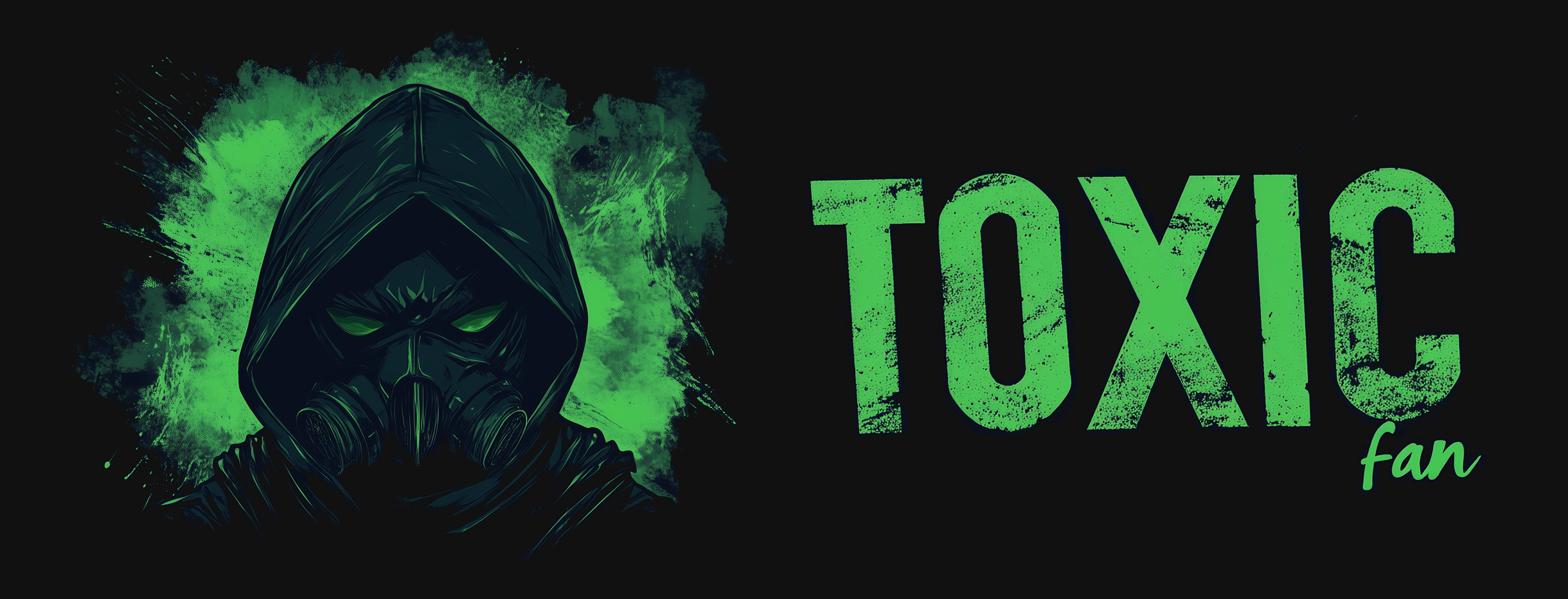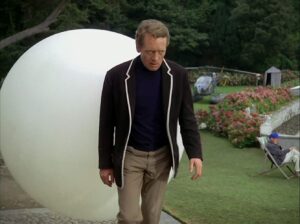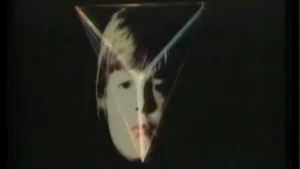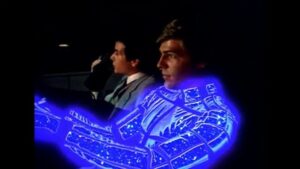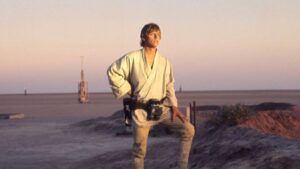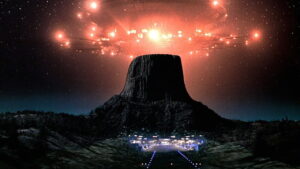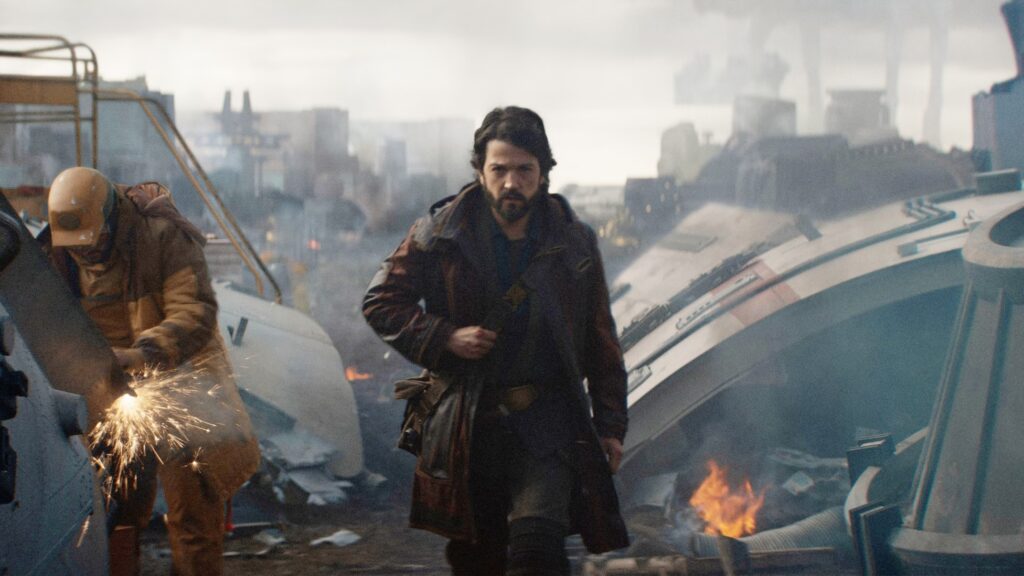
Diego Luna as Cassian Andor. Photo Credit: LucasFilm / Walt Disney Studios
In a galaxy far, far away, amidst the backdrop of laser swords, space wizards, and questionable paternity, “Andor” saunters onto the scene like a gritty noir detective who’s seen some things, man. It’s as if someone looked at the Star Wars universe and thought, “You know what this needs? More socio-economic commentary and fewer Ewoks.” And you know what? They weren’t wrong.
“Andor” is the Star Wars show that no one knew they wanted but everyone desperately needed. It’s like the franchise woke up one day, looked in the mirror, and decided it was time to trade in its lightsaber for a vintage blaster and a healthy dose of existential dread. Gone are the days of farm boys staring wistfully at binary sunsets. Instead, we get Cassian Andor, a man so morally gray he makes Han Solo look like a Boy Scout.
Our protagonist, Cassian, isn’t your typical Star Wars hero. He’s not chosen by destiny, he can’t lift rocks with his mind, and he definitely doesn’t have a cool laser sword. What he does have is a chip on his shoulder the size of a Star Destroyer and enough emotional baggage to fill the cargo hold of said Star Destroyer. Cassian is the kind of guy who’d shoot first and not even bother to ask questions later, because in this corner of the galaxy, questions are a luxury no one can afford.
The show follows Cassian Andor’s journey from a surly, self-interested thief to a surly, slightly-less-self-interested rebel spy. It’s character development, but make it grumpy.
But let’s back up a parsec. For those who’ve been living in a Sarlacc pit, “Andor” is a prequel to “Rogue One,” which itself is a prequel to “A New Hope.” It’s like the Star Wars universe is playing cinematic Russian nesting dolls at this point. The show follows Cassian Andor’s journey from a surly, self-interested thief to a surly, slightly-less-self-interested rebel spy. It’s character development, but make it grumpy.
What sets “Andor” apart from its space opera siblings is its unflinching look at the everyday reality of living under the Empire’s boot. This isn’t the Empire of stormtroopers comically missing their shots. This is the Empire of bureaucratic nightmares, corporate greed, and systemic oppression. It’s less “pew pew” and more “Please submit your form TK-421 in triplicate or face summary execution.” The show paints a picture of a galaxy where the real villain isn’t some guy in a black cape with asthma, but the soul-crushing machine of imperialism itself.
And boy, does “Andor” lean into this. The show’s got more shades of gray than a Coruscant paint swatch. Our “heroes” are rebels, yes, but they’re also terrorists, depending on where you’re standing. The Empire isn’t just cartoonishly evil; it’s filled with people just trying to climb the corporate ladder, one oppressive policy at a time. It’s like “The Office,” but instead of selling paper, they’re selling fascism.
The show’s commitment to moral ambiguity is refreshing in a franchise that often deals in absolutes. (Insert obligatory Sith joke here.) There are no easy answers in “Andor,” no clear-cut good guys or bad guys. Just people trying to survive in a galaxy that seems hellbent on grinding them down. It’s depressing as hell, but in a weirdly captivating way. You’ll find yourself rooting for characters to survive, knowing full well that their victory might mean someone else’s defeat. It’s the kind of show that’ll have you cheering one minute and questioning your life choices the next.
This isn’t the shiny, sleek future of Coruscant or the quaint backwater of Tatooine. This is a universe of grimy spaceports, claustrophobic urban sprawls, and sterile Imperial facilities where hope goes to die.
But it’s not all doom and gloom. “Andor” has a dry, sardonic wit that cuts through the darkness like a lightsaber through butter. The dialogue crackles with tension and subtext, each conversation a verbal chess match where the stakes are always life and death. It’s the kind of show where a raised eyebrow can speak volumes, and a well-timed pause can be more devastating than a Death Star blast.
And let’s talk about that cast. “Andor” is packed with more acting talent than you can shake a gaffi stick at. Diego Luna returns as Cassian, bringing depth and nuance to a character who could easily have been just another brooding antihero. Stellan Skarsgård shows up as Luthen Rael, a rebel leader who’s playing so many sides it’s a wonder he can keep track. And then there’s Genevieve O’Reilly as Mon Mothma, finally getting the screen time she deserves to show us that starting a rebellion is a lot more complicated than just declaring “I rebel” and hoping for the best.
But the real scene-stealer? The universe itself. “Andor” presents a Star Wars galaxy that feels lived-in, gritty, and real. This isn’t the shiny, sleek future of Coruscant or the quaint backwater of Tatooine. This is a universe of grimy spaceports, claustrophobic urban sprawls, and sterile Imperial facilities where hope goes to die. It’s a visual feast that tells a story with every frame, from the worn-out clothes of the downtrodden to the ostentatious wealth of Imperial collaborators.
The show’s attention to detail is staggering. Every location, every costume, every prop feels meticulously crafted to tell a story. It’s the kind of show where you can pause at any moment and find yourself lost in the background details. Is that alien graffiti a cry for help or a recipe for space chowder? Is that droid in the corner plotting revolution or just in desperate need of an oil bath? The possibilities are endless, and half the fun is in the speculation.
But perhaps the most revolutionary thing about “Andor” is its pacing. In a media landscape obsessed with breakneck action and constant stimulation, “Andor” dares to slow things down. It takes its time, letting tension build like pressure in a faulty hyperdrive motivator. Episodes unfold with the deliberate pace of a well-planned heist, each moment building on the last until you find yourself on the edge of your seat, heart racing, even though objectively, you’re just watching people have a tense conversation about shipping manifests.
And when the action does come, boy does it deliver. “Andor” treats its set pieces like fine Alderaanian wine – to be savored, not guzzled. Each confrontation feels weighty, each blaster shot consequential. There’s no Force ex machina here to save the day. Just skill, luck, and often, a hefty dose of desperation.
“Andor” is the show that proves Star Wars can grow up without losing its sense of wonder. It’s a political thriller, a heist movie, a war story, and a character study all rolled into one sleek, Rebel Alliance package. It asks hard questions about power, resistance, and the cost of revolution, all while never forgetting that at its heart, it’s still a story about space battles and cool droids.
In the end, “Andor” is more than just a Star Wars show. It’s a testament to what the franchise can be when it steps out of its comfort zone. It’s proof that you don’t need Jedi mind tricks to keep an audience captivated; sometimes, all you need is a compelling story about ordinary people facing extraordinary circumstances.
So strap in, rebel scum. “Andor” is here to remind us that in a galaxy full of magic and mysticism, sometimes the most powerful force of all is the will of the people. Just don’t expect any cute alien sidekicks or happy endings. In Cassian’s world, the only certainty is that the Empire will always be knocking at your door. The question is: when they do, will you be ready to answer?
